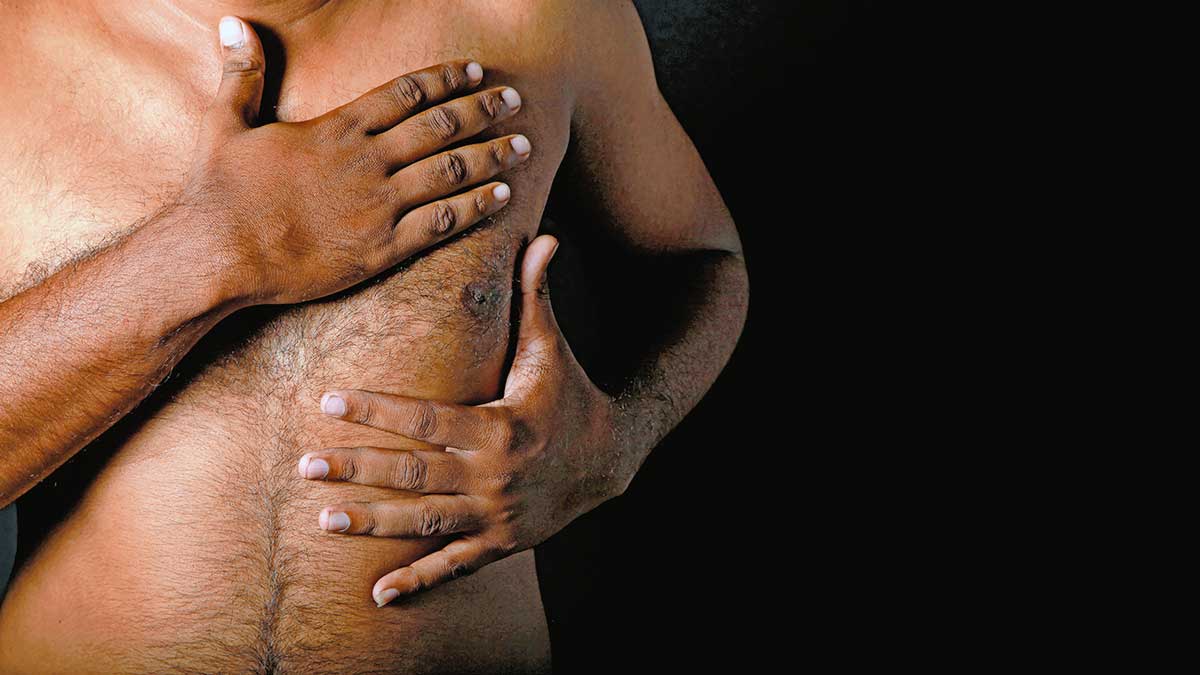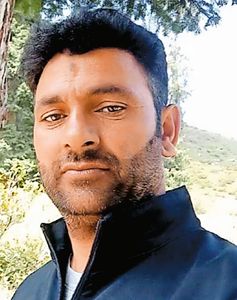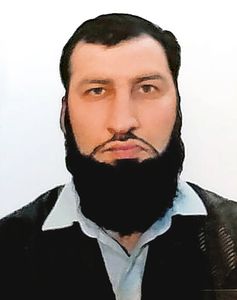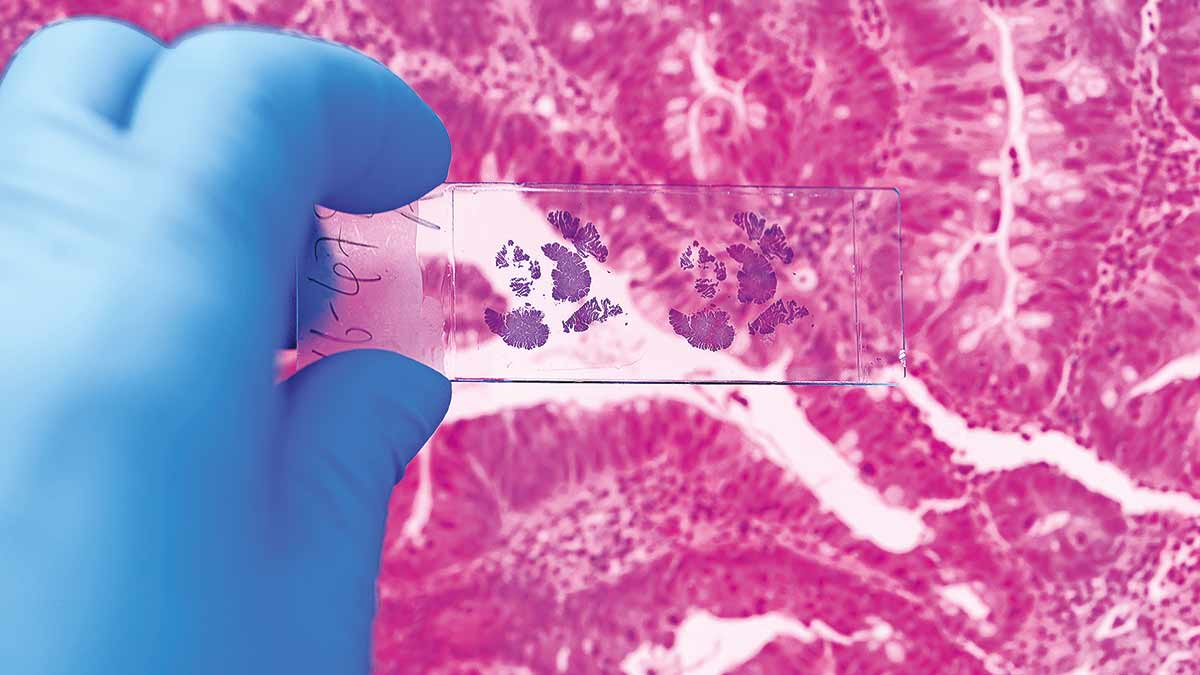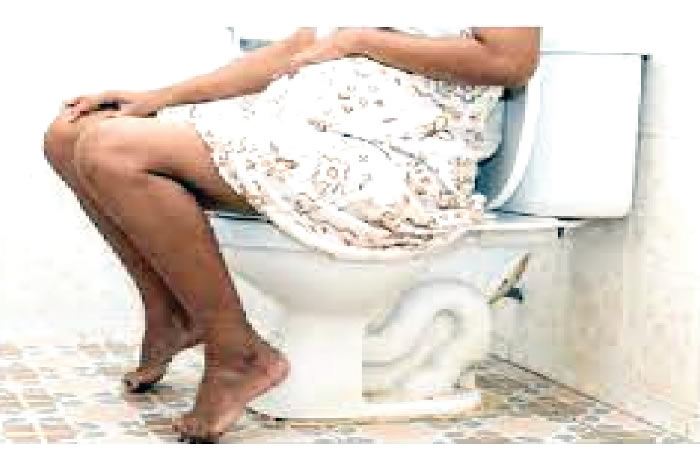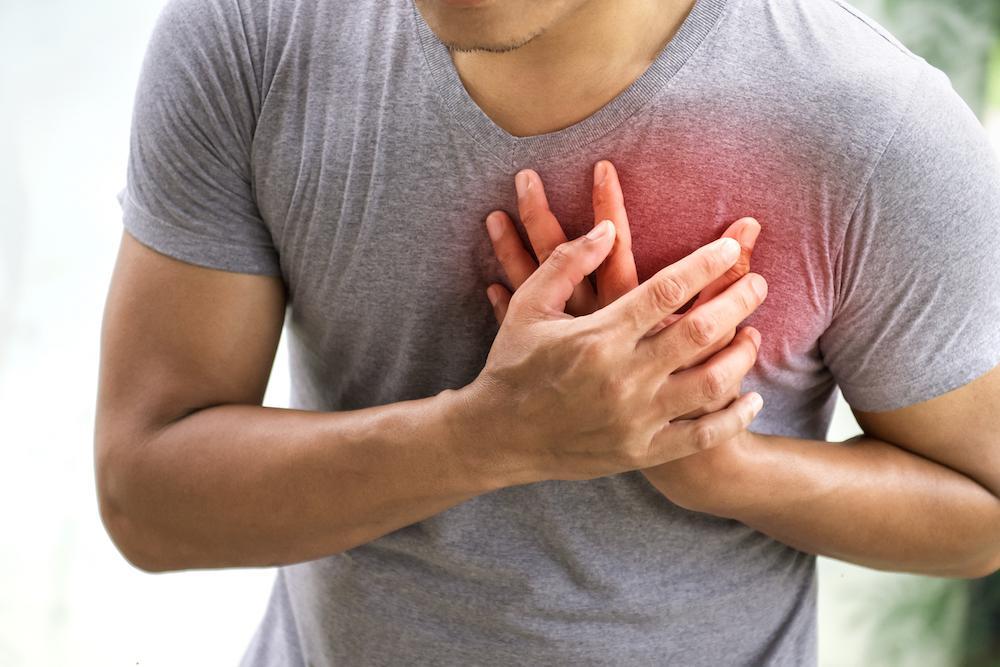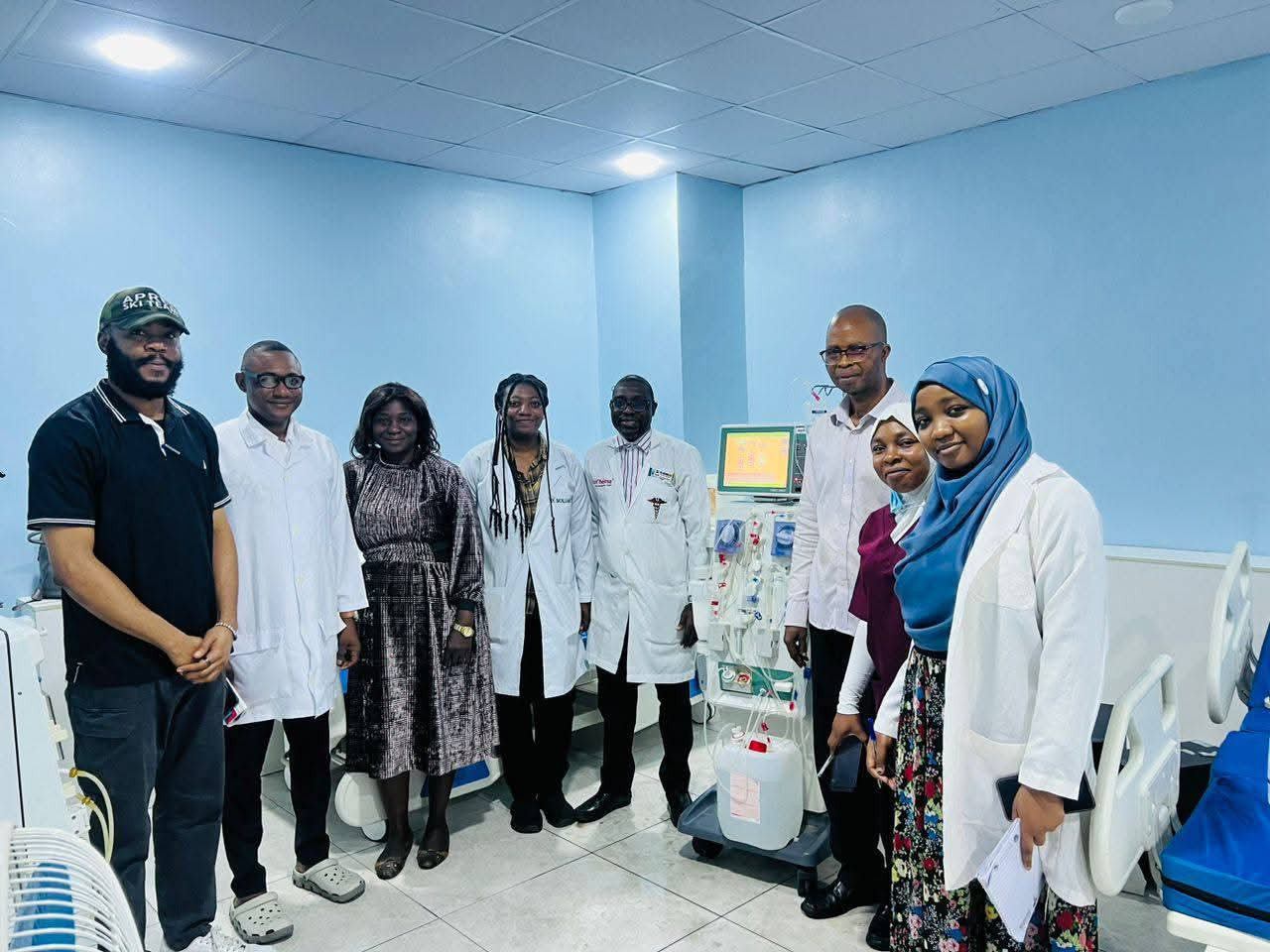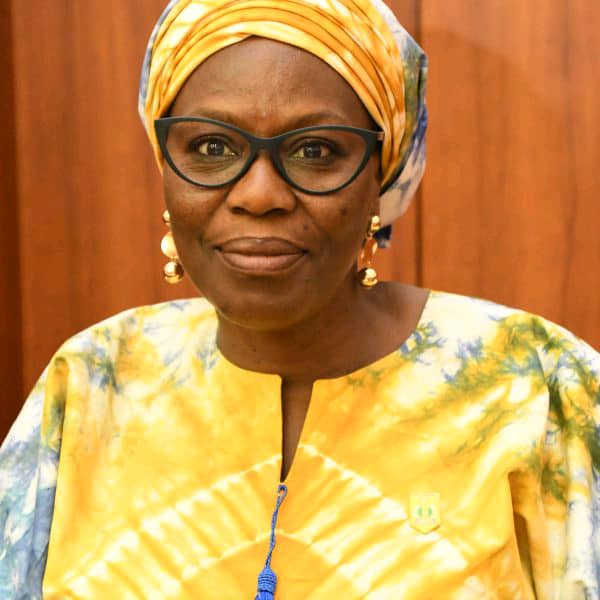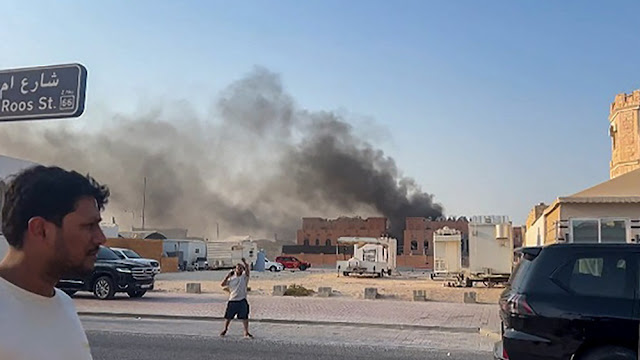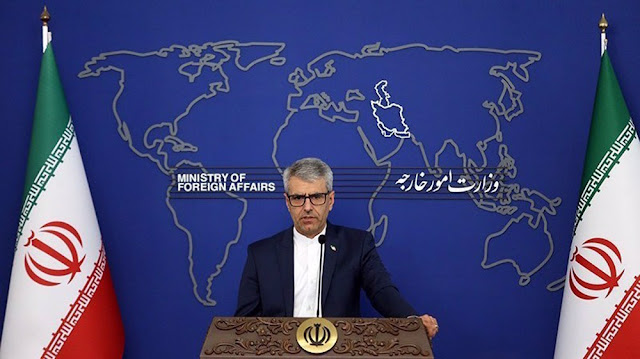Though its prevalence is much lower than in women, it is on a gradual rise in India
Pooja Biraia, The Week : Last year, on his way home from work, Raja Bhat sensed a lump on the side of his breast. “Somehow, out of nowhere, I sensed a lumpy feel on the side of my breast; it was about the size of a ball in ball bearings,” he says. “I was perfectly healthy. I don’t know where it came from. I had no pain or discomfort most times. There would be a burning sensation at times. I consulted a doctor at the government hospital in Srinagar.”
It took the 33-year-old father of two a bit of time to explain the lump in his breast, as he kept looking for an alternative word for breast. Bhat was asked to get an FNAC (Fine Needle Aspiration Cytology) test to determine if the lump was malignant or benign. Malignant, said the report. But like most cancer patients, Bhat was in denial at first. He repeated the test twice, the second time at a private laboratory followed by an ultrasound, all of which confirmed the diagnosis.
Raja Bhat
Bhat recalls feeling broken, not just because he had cancer but more so because he had a malignant tumour in, what he refers to as, a “female organ”. For several days, he kept the news largely to himself, confiding only in his wife. “I was devastated. It was almost the end for me,” he tells THE WEEK over phone. “Those whom I did confide in looked at me as if I had turned into an alien. ‘Cancer of what?’ they would snigger. And people would tell me there was no hope.”
Bhat, the sole breadwinner of his family, went into a shell, blaming himself and his “karma” for his stage two cancer. But then he met Dr Zahoor Sheikh, an oncologist at Srinagar’s Paras Hospital, who assured him that he was nowhere close to dying. After meeting Sheikh, the first thing Bhat did was light a cigarette; he had stopped smoking post his diagnosis. It was a puff of relief—Sheikh’s words had made him “less anxious and a little less mad at the world”.
Last March, Bhat underwent surgery to remove the lump. He told no one about it. He was discharged a day after the surgery and drove himself home. “Nobody needed to know anything,” says Bhat, who runs an ice cream business. “I was doing okay and this was personal.” Four cycles of chemotherapy and 28 sessions of radiation followed, and life went on.
Breast cancer is often perceived as a ‘woman’s disease’, and men account for about 1 per cent of all breast cancer cases. “This year, I would have operated on about six patients, in comparison to three last year,” says Sheikh, who has been practising in Kashmir for 14 years and was at the public-sector Sher-i-Kashmir Institute of Medical Sciences (SKIMS) before moving to the private hospital. At SKIMS, he says, “we would see about 8 to 10 cases of male breast cancer in a year and a high proportion were stage 4”.
There has been a rise—marginal as it may be—in the number of male breast cancer cases. In Kashmir, for instance, there were 94 cases of male breast cancer from 2018 to 2022. Of these, 32 were in the age group 55 to 69 years, 28 in the 40 to 54 years age group, 18 were over 70 years and 16 were under 40 years. As per the government data, only two of these patients arrived for consultation at stage 1, 45 came in at stage 2, 27 at stage 3 and 20 at stage 4.
Male breast cancer is rare—the female to male ratio is 125:1; for every male with breast cancer, there are 125 women with breast cancer, says Sheikh. Also, the incidence of male breast cancer in India is almost similar to the global rate, which is less than 1 per cent. In Kashmir though, one study published in 2009 showed an incidence of 4.1 per cent. “An incidence of 4.1 per cent for male breast cancer indicates that this disease is not as uncommon as presumed in this part of the world,” states the study, published in Annals of Saudi Medicine. But it was a retrospective study, done by the pathology department of SKIMS, of male breast cancer patients seen from January 1983 to December 2007, focusing on data on epidemiology, risk factors, clinical assessment, genetics, pathology and molecular markers. “That means there will be bias and it will not truly reflect the trends in the population,” says Sheikh.
Elsewhere in the country, the numbers are negligible when compared with female breast cancer cases, says oncologist Dr Deepak Sundriyal, who is associate professor at AIIMS Rishikesh, but he too confirms that there is a slow rise in the number of male breast cancer cases. Some of the established risk factors for women, such as early menarche and late menopause, do not exist for males. The risk factors for men are old age, genetics—BRCA mutations, testicular disorders—chronic inflammation of the testes or undescended testes, obesity and liver disease.
The rise in numbers can be attributed to a change in lifestyle, says Sheikh. “As it is, there are many risk factors for breast cancer in men and one of them is the increase in weight and body mass index,” he says. “Although mortality for breast cancer has decreased globally, for a country like ours which is in a transition phase, it has not decreased in comparison with high income countries.”
As far as management of the illness is concerned, breast cancer in men offers a better prognosis than in women, even as treatment remains the same—surgery, chemotherapy, hormone therapy or targeted therapy. In men, say doctors, detecting breast cancer should be easy because there is little fat. In women, the lump can be obscured by layers of fatty tissues, making it difficult to detect. Most men who present themselves for diagnosis of breast cancer fall in the 50-plus age group, but doctors are now seeing cases in men in their early 30s too, like Bhat.
While detecting a lump in men is easier, diagnosing male breast cancer comes with challenges, mostly stemming from gender bias. “Try telling a male patient that he must undergo mammography and see his reaction,” says Sundriyal. Agrees Sheikh: “It has been difficult to counsel men, that they, too, can get breast cancer. The unwillingness to accept it is a problem of the male ego because breasts are associated with women. They always doubt the diagnosis.”
Most men and many health professionals have never heard of male breast cancer until someone they know is diagnosed. This low awareness leads to delayed self-examination, which, in turn, leads to more advanced stage of the cancer at diagnosis. “Low awareness about this disease among men is a big challenge,” says Sundriyal. “Stigma may be more among educated patients because they have an insight into the disease; for those in the socially marginalised sections, it is just like any other chest lump. It creates a sense of shame that it arises from a breast, which is considered a female organ, so it is better to go to a quack.” He has come across patients who have tried alternative therapies and “everything under the sun” before visiting the hospital.
Another important aspect, say doctors, is the absence of large-scale studies on male breast cancer because of the rarity of the disease. “It is very difficult to conduct a controlled trial or a study in these patients,” says Sundriyal. “All these clinical trials involve female patients and that is why male patients are also treated along the line of treatment for female patients.”
Moreover, breast cancer awareness campaigns, including the pink ribbon, and survivor stories are all overwhelmingly focused on women. This could lead men to feel confused or embarrassed. That is how gendered breast cancer as an illness has become, say experts. They also say that breast cancer in males often clashes with the idea of masculinity that men in our society grow up with. “A disease tied to a body part stereotyped as feminine compounds the blow to self identity and fear of being seen as less ‘manly’, says Sheikh. He places his patient Bhat in this category. “At 33, he obviously was shaken by the diagnosis. Cancer in a ‘female organ’ further compounded it for him to even accept the diagnosis. He completed the treatment that we gave but never came back for followup.”
The hospital coordinator reached out to Bhat trying to convince him to come for the followup, which is crucial in cancer treatment to detect a relapse in time. Bhat reportedly told the coordinator that he was fine and taking hormone therapy medicines. “It is the stigma associated with the disease that is keeping him from visiting us—that awkward feeling at the back of your mind that you still have to visit the doctor for a disease that you don’t even have the courage to share with your friends,” says Sheikh. “Our coordinator just called him to ask about his health—he is fine and seems to be working and the disease seems to be under control. That is also why he feels that he does not need to come. Many a time that is what happens. Only once the disease returns do they come back.”
Stigma also delays seeking help on time, says Sundriyal. “Lump in the chest is often ignored on the premise that ‘I can’t have breast cancer’,” he says. The difference between a male and female patient of breast cancer is that the former always shows up at an advanced stage of the disease, say doctors. Like what happened in the case of Bhat. “I simply chose to ignore because it was neither painful nor interfering with day-to-day work,” he says. If it was not for his family physician-friend who nudged him to consult an oncologist, he would not have got the treatment, admits Bhat. S. Chandrashekhar, a retired government employee from the agricultural department in the district of Pithoragarh in Uttarakhand, agreed to speak to THE WEEK only on the condition of anonymity. When he spotted a “lumpy hardness” on his right breast, he attributed it to his “years of disciplined exercising regimen”, that comprised waking up at 4.30am each morning and working out for 45 minutes. Also, he did not worry “because there was neither pain nor any other kind of symptom”.
Chandrashekhar, who carries the BRCA mutation, resorted to ayurvedic treatments, wishing for the “embarrassment to vanish on its own”. But it only got worse. “I experienced severe burning and excessive itching,” he says. That is when he got tested and was diagnosed with cancer, forcing him to consult an oncologist. By the time, he showed up at the oncologist’s, his cancer had developed to stage 3. The tumour had grown and reached till his armpit. On March 23, 2023, he got admitted at AIIMS Rishikesh and was put on chemotherapy. After eight sessions, the tumour was removed. He then had 15 rounds of radiotherapy in Dehradun’s Kailash Hospital.
Dr Bharat Bhosalee
“At the moment, I think I am good because my last scan showed no presence of any malignancy,” says Chandrashekhar from his home in Haldwani. Just a few hours before our chat, he had visited Sundriyal, travelling 500km for his routine followup. “It took so much pain, about 55 to 60 stitches and severe constipation that would stretch to a week at times to reach where I have,” says Chandrashekhar. He has been advised to drink three litres of water daily, half litre of cow milk twice daily and have home-cooked food. Like Chandrashekhar, his 34-year-old son, too, has the BRCA mutation, and he has been advised routine screening and followup.
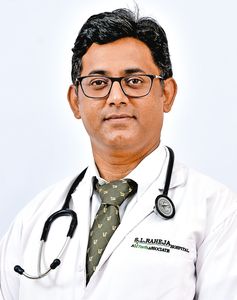 |
| Dr Bharat Bhosale |
Chandrashekhar says it took a lot of gumption to go through what he went through. He consciously did not use the wheelchair after surgery. “It would have dampened my spirit and reduced my independence,” he says. Yet, even a fighter like him decided to keep mum about his cancer diagnosis. “Cancer was a big revelation for me. I did not know I was a fighter until cancer happened,” he says. “But of course, I am still very closeted about what I went through, nobody needs to know what type of cancer it was.”
Apart from feelings of shame, isolation or even self-blame, higher rates of anxiety and depression are reported among men with breast cancer compared with women. Additionally, social isolation emanating from the difficulty in finding male-specific support groups and the fear of discussing treatment side effects, especially such as big decisions like mastectomy, with friends or family add to the anxiety among men with breast cancer, say experts.
“The main problem is that there is no awareness in relation to male breast cancer and there is social stigma,” says Dr Bharat Bhosale, consultant medical oncologist, S.L. Raheja Hospital – a Fortis associate, Mahim, Mumbai. “How does a man tell somebody that there is a breast lump? To communicate that in itself is a worry for many. So they keep neglecting it until one day it begins to infiltrate the skin and retracts the nipple, which, in turn, leads them to approach a skin specialist. A significant amount of time passes in all of this.” Cancers with oestrogen and progesterone receptors are slow growing tumours and that is why the presentation is late. “I have seen that a minimum of a year passes by the time a man seeks help from a doctor for the treatment of breast cancer,” says Bhosale.
Also, even physicians lack sensitivity when it comes to diagnosing, treating and counselling men with breast cancer. Add to that, health care communication gaps, where oncology literature, consent forms and support materials almost always use female pronouns and images, making men feel “out of place” in survivor programmes or rehabilitation sessions.
It is high time that society, including the medical fraternity, is better sensitised to deal with male breast cancer.


